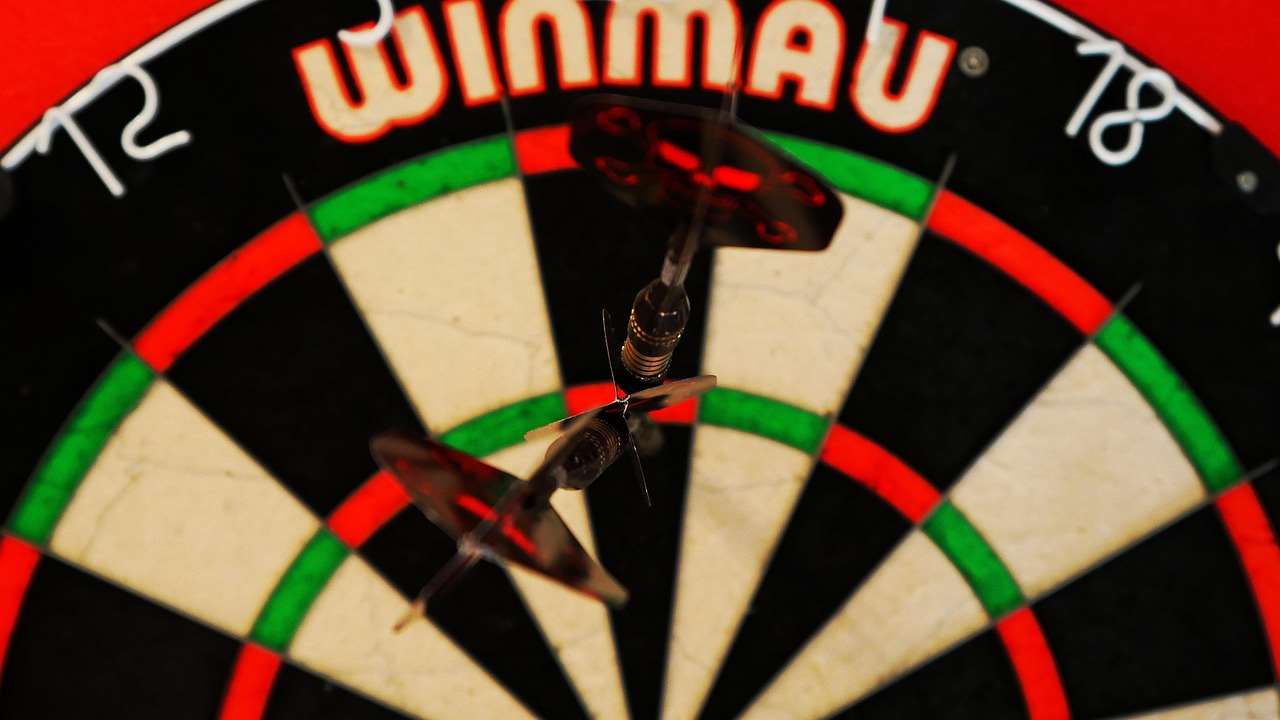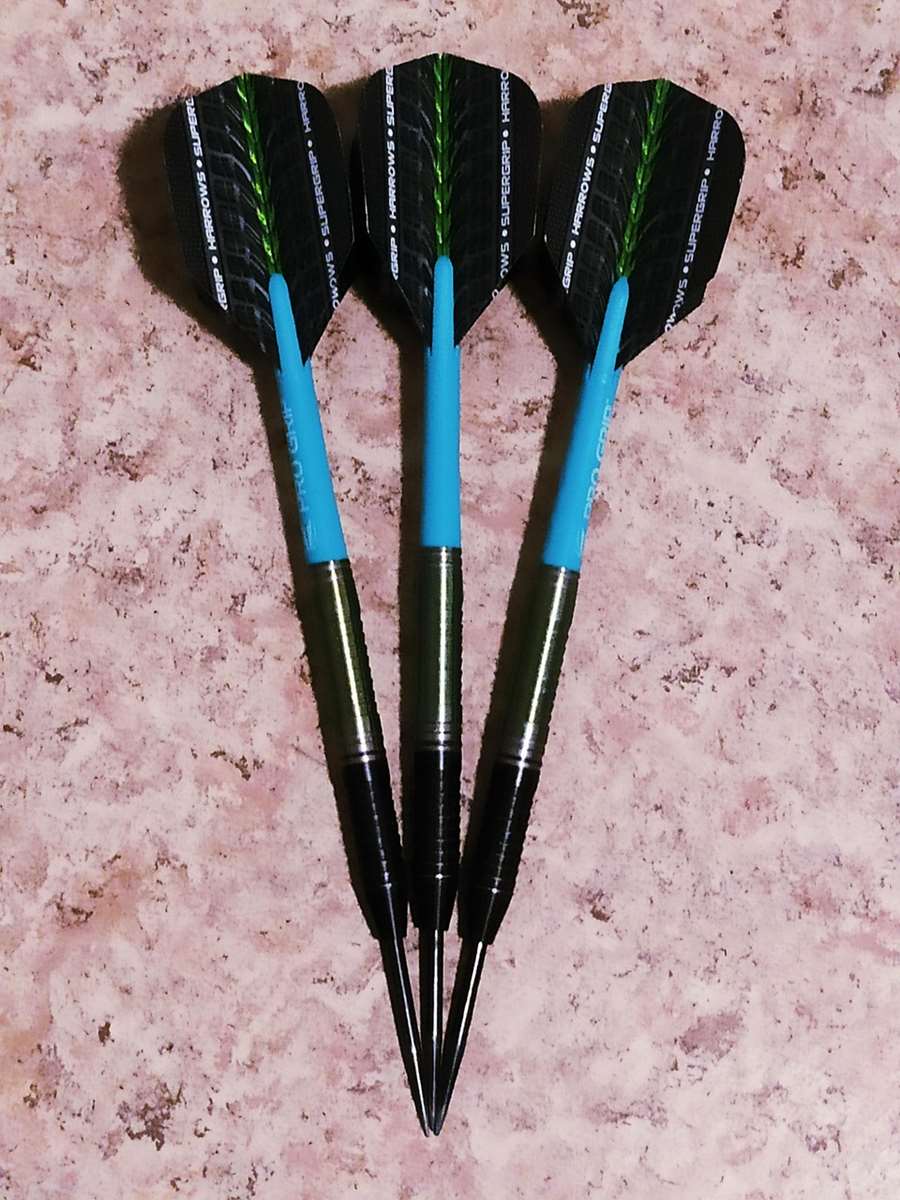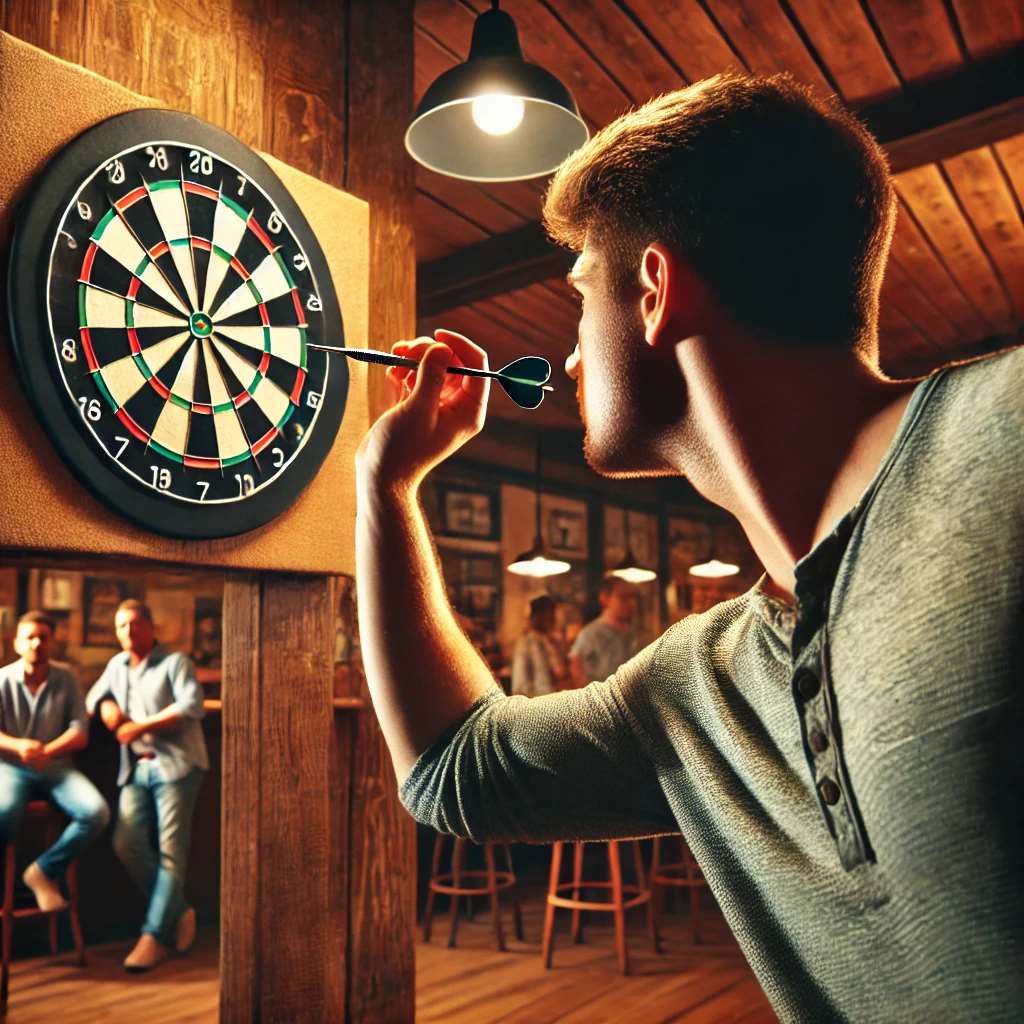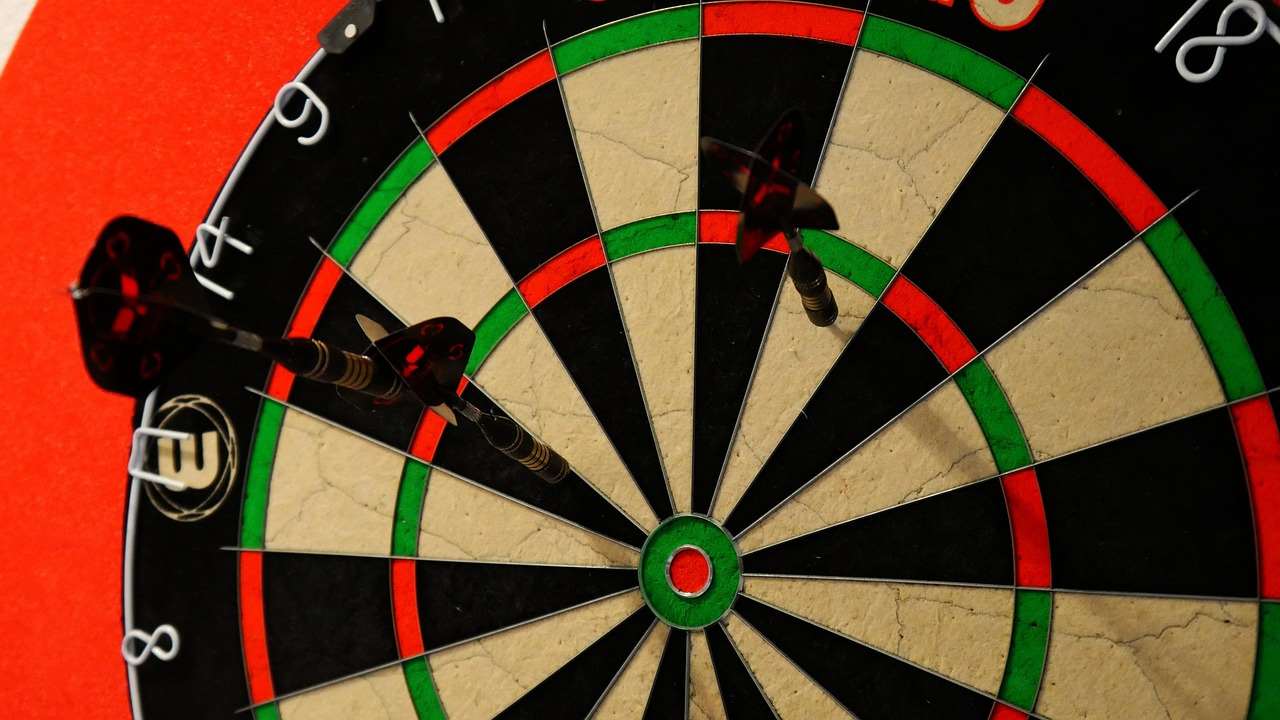The **history of steel tip dartboards** is a long and fascinating one, evolving from humble beginnings to the globally recognized sport we know today. This article explores that journey, delving into the origins, evolution, and key milestones that shaped the game of darts and the boards we use.
⚠️ Still Using Pen & Paper (or a Chalkboard)?! ⚠️
Step into the future! The Dart Counter App handles all the scoring, suggests checkouts, and tracks your stats automatically. It's easier than you think!
Try the Smart Dart Counter App FREE!Ready for an upgrade? Click above!
From Tree Trunks to Standardized Boards: Exploring the History Of Steel Tip Dartboards
The very early roots of darts are somewhat shrouded in mystery, but many believe the game evolved from archery. Soldiers would throw shortened arrows or darts at upturned wine barrels or tree trunks. These rudimentary targets lacked standardization, but they were the genesis of what would become the modern dartboard.

As time passed, the game moved indoors, and the targets became more refined. Sections were often marked by natural imperfections in the wood. The exact layout of the modern dartboard is debated, but one popular theory attributes it to Brian Gamlin, a carpenter from Lancashire, England, who is said to have devised the numbered layout in 1896. This layout aimed to minimize the element of luck and reward accuracy. While this story is widely circulated, concrete historical evidence is lacking.
The materials used for these early dartboards varied greatly. Wood was the primary component, but the quality and type of wood would impact the board’s durability and playability. Over time, different types of wood were tested to see which would stand up best to the constant piercing of darts. Learning about Investing In Premium Dart Equipment starts with knowing your equipment.
The Development of the Numbering System
The distinctive numbering system on a **steel tip dartboard** is a crucial element of the game. The arrangement, with high numbers like 20 placed next to low numbers like 1 and 5, is designed to penalize inaccuracy. A slight misthrow can result in a significantly lower score, adding a strategic element to the game. The sequence intentionally limits the reliance on chance, rewarding precision and skill. The current numbering system makes the game much more interesting than one that randomly assigned points.
The evolution of the numbering system is intertwined with the overall **history of steel tip dartboards**. While the exact origins remain unclear, the system’s development was likely a gradual process, shaped by trial and error. Different layouts were probably experimented with before the current standard emerged as the most effective in balancing skill and strategy. As darts gained popularity, the need for a fair and challenging scoring system became increasingly important.
The Evolution of Dartboard Materials
The transition from wood to more durable and self-healing materials was a significant turning point in the **history of steel tip dartboards**. Sisal fibers, tightly compressed to form a dense surface, became the industry standard. This material offered several advantages over wood, including increased longevity, reduced bounce-outs, and a self-healing property that minimized visible dart holes. If you are looking to Choose Best Dart Equipment, look into materials first.

The introduction of sisal dartboards revolutionized the game. These boards could withstand countless throws without significant deterioration, making them a cost-effective and reliable option for both casual players and serious competitors. The self-healing nature of sisal also maintained the board’s playing surface, ensuring consistent scoring and reducing the need for frequent replacements.
The Rise of Wire Spiderwebs
Early dartboards often used metal strips or wires to divide the scoring sections. However, these early wire systems were often prone to bounce-outs, where darts would hit the wire and deflect away from the board. The development of thinner, embedded wire spiderwebs was a major improvement. These new wire designs allowed for more darts to stick into the board while minimizing the possibility of bounce-outs.
The refinement of the wire spiderweb continued over time. Manufacturers experimented with different wire shapes, thicknesses, and materials to further reduce bounce-outs and enhance scoring accuracy. The move to triangular or “knife-edged” wire profiles was particularly impactful, as it allowed darts to slide past the wire and into the scoring area more easily. Many players think this is What Makes Darts Premium Quality
Standardization and Regulation
As darts grew in popularity, the need for standardized rules and equipment became increasingly apparent. Organizations like the British Darts Organisation (BDO) and the Professional Darts Corporation (PDC) played a crucial role in establishing these standards. These organizations set regulations for dartboard dimensions, weight, and materials, ensuring fair play and consistent competition across different leagues and tournaments.
Standardization not only ensured fair competition but also helped to elevate the game’s professionalism and appeal. Standardized rules and equipment made it easier for players to compete at different levels, and it also made the game more accessible to new players. The standardization has helped the **history of steel tip dartboards** move forward.
The Modern Steel Tip Dartboard
Today’s **steel tip dartboards** are highly sophisticated pieces of equipment. Made from high-quality sisal fibers, featuring razor-thin wire spiderwebs, and adhering to strict dimensional standards, they represent the culmination of decades of refinement. Modern manufacturing techniques ensure consistent quality and durability, providing players with a reliable and enjoyable playing experience.

The ongoing development of dartboard technology continues to push the boundaries of the game. Manufacturers are constantly exploring new materials and designs to further reduce bounce-outs, improve scoring accuracy, and enhance the overall playing experience. From the humble beginnings of tree trunks to the precision-engineered boards of today, the evolution of the **history of steel tip dartboards** is a testament to the enduring appeal of this classic game. If you have been looking at the Difference Budget Premium Darts, that will change how you view this game.
The Global Popularity of Steel Tip Darts
From its roots in English pubs, steel tip darts has become a global phenomenon. Professional darts tournaments draw massive crowds and television audiences, showcasing the skill and excitement of the game. The accessibility of darts, combined with its strategic depth, makes it a popular pastime for people of all ages and abilities. The **history of steel tip dartboards** is intertwined with the spread of the game across the globe.
The internet and social media have played a significant role in expanding the reach of darts. Online communities connect players from around the world, sharing tips, strategies, and tournament information. Online dartboards allow players to compete remotely, fostering a sense of community and expanding the game’s accessibility even further. Quality Comparison Budget Premium Darts is often a popular topic online.
Tips for Choosing a Quality Steel Tip Dartboard
Selecting the right dartboard can significantly impact your playing experience. Here are some key factors to consider when choosing a **steel tip dartboard**:
- Material: Opt for a board made from high-quality sisal fibers for durability and self-healing properties.
- Wire Spiderweb: Look for a board with thin, embedded wires to minimize bounce-outs. Knife-edged or triangular wire profiles are generally preferred.
- Construction: Ensure the board is well-constructed and evenly compressed to provide a consistent playing surface.
- Brand Reputation: Choose a reputable brand known for producing high-quality dartboards.

By carefully considering these factors, you can select a **steel tip dartboard** that will provide years of enjoyable gameplay.
Maintaining Your Steel Tip Dartboard
Proper maintenance can extend the life of your **steel tip dartboard** and ensure optimal performance. Here are some tips:
- Rotate the Board: Regularly rotate the board to distribute wear evenly.
- Remove Darts Properly: Twist darts slightly as you remove them to avoid damaging the sisal fibers.
- Avoid Moisture: Keep the board dry to prevent warping or damage.
- Clean Regularly: Use a soft brush to remove loose fibers and dust.
Following these simple maintenance tips will help keep your dartboard in top condition for years to come. Players may also compare Budget vs Premium Darts Compared
The Future of Steel Tip Dartboards
The **history of steel tip dartboards** continues to evolve. Innovations in materials, construction techniques, and technology are constantly shaping the future of the game. As darts continues to grow in popularity, we can expect to see even more advancements in dartboard design and performance. From smart dartboards with automatic scoring to new materials that offer even greater durability and playability, the future of steel tip darts is bright.

The enduring appeal of steel tip darts lies in its simplicity, strategic depth, and social nature. Whether played in a casual setting or a competitive tournament, darts offers a challenging and rewarding experience for players of all skill levels. As the game continues to evolve and adapt, the **history of steel tip dartboards** will undoubtedly continue to be written.
Conclusion
The journey of the **history of steel tip dartboards**, from humble beginnings to a globally recognized sport, is a testament to the enduring appeal of skill, strategy, and friendly competition. From the evolution of materials and the ingenious numbering system to the standardization of rules and the global spread of the game, the development of the dartboard is a fascinating reflection of the human desire for improvement and innovation. Now that you know more about their history, why not find some Finding Value Budget Dart Sets? Whether you’re a seasoned pro or a casual player, understanding the **history of steel tip dartboards** can deepen your appreciation for this classic game. Consider investing in a high-quality dartboard today to elevate your playing experience.
Hi, I’m Dieter, and I created Dartcounter (Dartcounterapp.com). My motivation wasn’t being a darts expert – quite the opposite! When I first started playing, I loved the game but found keeping accurate scores and tracking stats difficult and distracting.
I figured I couldn’t be the only one struggling with this. So, I decided to build a solution: an easy-to-use application that everyone, no matter their experience level, could use to manage scoring effortlessly.
My goal for Dartcounter was simple: let the app handle the numbers – the scoring, the averages, the stats, even checkout suggestions – so players could focus purely on their throw and enjoying the game. It began as a way to solve my own beginner’s problem, and I’m thrilled it has grown into a helpful tool for the wider darts community.